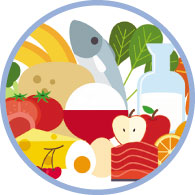
Hitching your wagon to a star
Syed Fattahul Alim | Saturday, 5 February 2022
 According to the UN, the world population will increase from the present 7.5 billion to 9.7 billion by 2050. To feed this additional two billion people, the world will be required to increase food production by 60 per cent. But how are farmers going to meet this extra demand for food as the size of arable land is not going to expand that much? Scientists are of the view that by 2050, the size of the cultivable land globally may see an expansion of only 4.0 per cent.
According to the UN, the world population will increase from the present 7.5 billion to 9.7 billion by 2050. To feed this additional two billion people, the world will be required to increase food production by 60 per cent. But how are farmers going to meet this extra demand for food as the size of arable land is not going to expand that much? Scientists are of the view that by 2050, the size of the cultivable land globally may see an expansion of only 4.0 per cent.
Clearly, the existing method of agriculture even with the technology being used over the past five or six decades will not be enough to meet the looming challenge of food security before humanity. In fact, it is not simply the technological hardware like sowing machines, tillers, harvesters, pesticides and the like that are the only crucial resources that farmers need to grow food crops on their lands.
The most crucial among these is the information on the soil profile of their land, the kind of crop to grow on the land as well as the fluctuations in the climatic conditions. One may recall here the environmental crisis caused by the drought situation in the Southern Plains region of the United States in the 1920s. This gave rise to the term, 'Dust Bowl,' as a dust storm swept through the American Midwest during that time. If the farmers of those days could get the benefits of the modern weather forecast, they could avert 'dust bowl'-like consequences.
Agriculture departments nowadays also provide farmers with information on soil condition of the land, choice of fertiliser, pesticide to apply to their fields and so on. But such information was not accessible so easily in those days. But time has changed. Data as the raw material for information have now become the most valuable commodity in the world. Large volumes of data, or Big Data, made available from network of computers worldwide are being analysed and turned into valuable information by experts. Artificial Intelligence (AI) with its Machine Reading (MR) ability is trying to understand the field of agriculture which is vast, very complex and in a state of flux to make predictions as well as decide responses. The agricultural farms generate huge quantities of data on temperature, use of water by the soil, changing weather condition, etc on a daily basis. AI can process this data into useful information practically in an instant, a feat that is beyond human capability. By the knowledge thus gained farmers can then plan when to sow, decide which crop to grow and which seed to choose to increase yield.
AI is also helping in developing what is known as precision agriculture. By this means farmers are now able to detect plant diseases, pests harming their crops and the nutritional health of the soil of their farmlands. Ai-powered robots have also been developed which can reduce the use of chemicals in the fields by 80 per cent and of herbicides by 90 per cent. For the purpose, such robots use precision spraying of herbicide on the weeds.
Production apart, there is yet another area that is of great concern for farmers. It is the fluctuation of the prices of their produce in the market. For their inability to foresee the changes in the prices of their crops in the post-harvest situation may prove disastrous. In food grain markets of developing countries like Bangladesh, the problem is acute. Farmers in Bangladesh often face such situations when they have either to sell their products at throwaway prices or dump those on the roadside.
Small wonder that many farmers as a result go broke, some even commit suicide. But if they had a tool that is able to make precise predictions about the future price trends of specific agricultural products including tomato, potato, onion and green vegetables, their worst fears could be allayed. To resolve the problem farmers would require a wide variety of data on weather condition based on satellite imagery to ascertain acreage of specific crops and monitor crop health in real time. AI has come in aid of farmers to predict crop yield, demand and supply situation and get the hang of the future price patterns.
The government along with farmers can make use of the knowledge to plan better and take the right decision at the right time. Agriculture is basically about making the most of limited resources. Land and water are such resources as will not increase. Through optimum and sustainable use of these resources humanity will have to survive. However, the days of pessimistic, Malthusian future of a world where population is the greatest curse is over. For manpower is no more a liability. Now with technology lending a hand to resolve the age-old problem of food security, humanity can now look forward to a time when it can hope to hitch its wagon to a star.